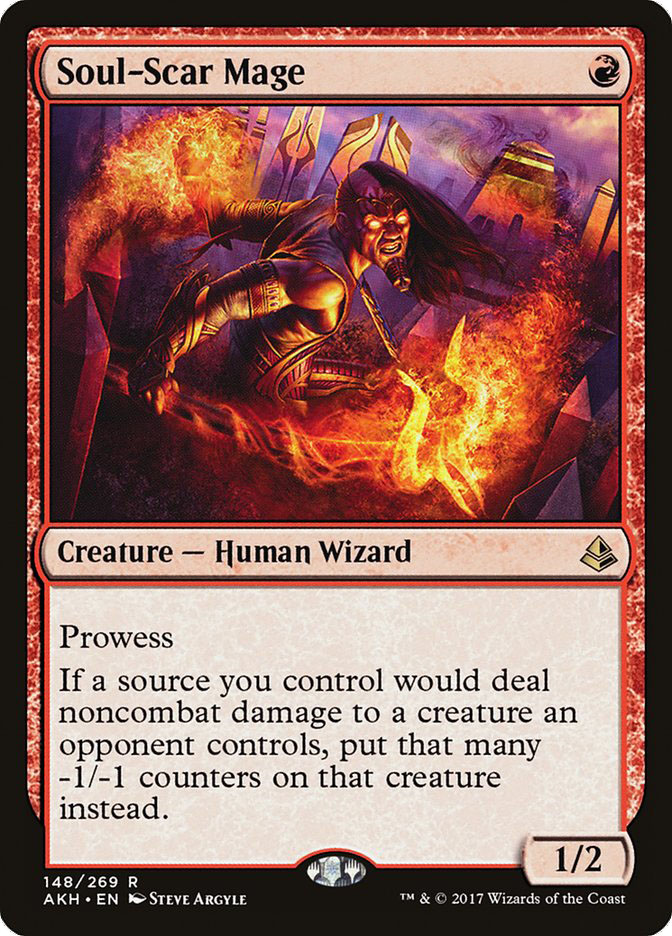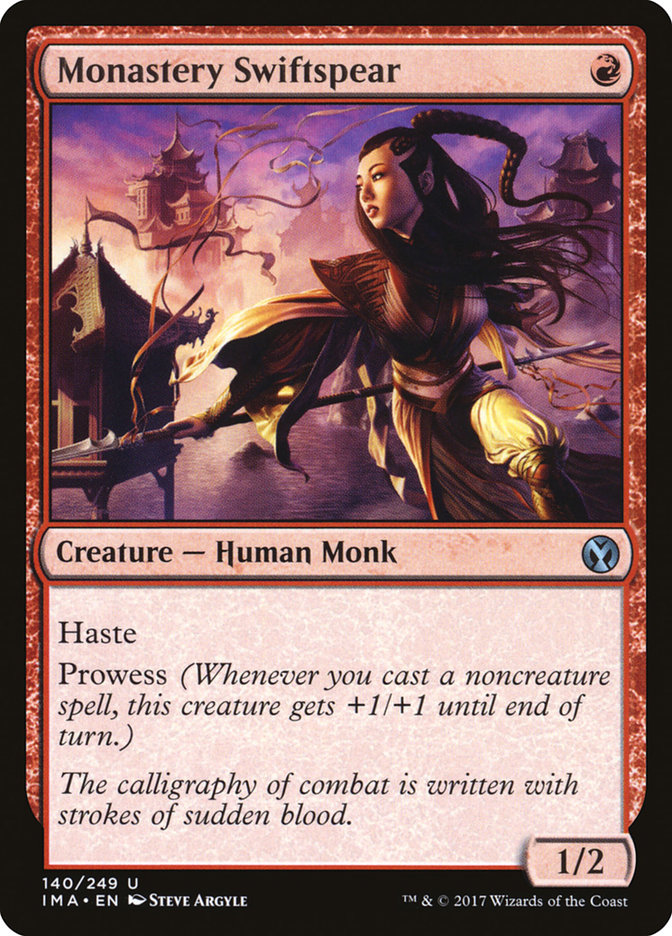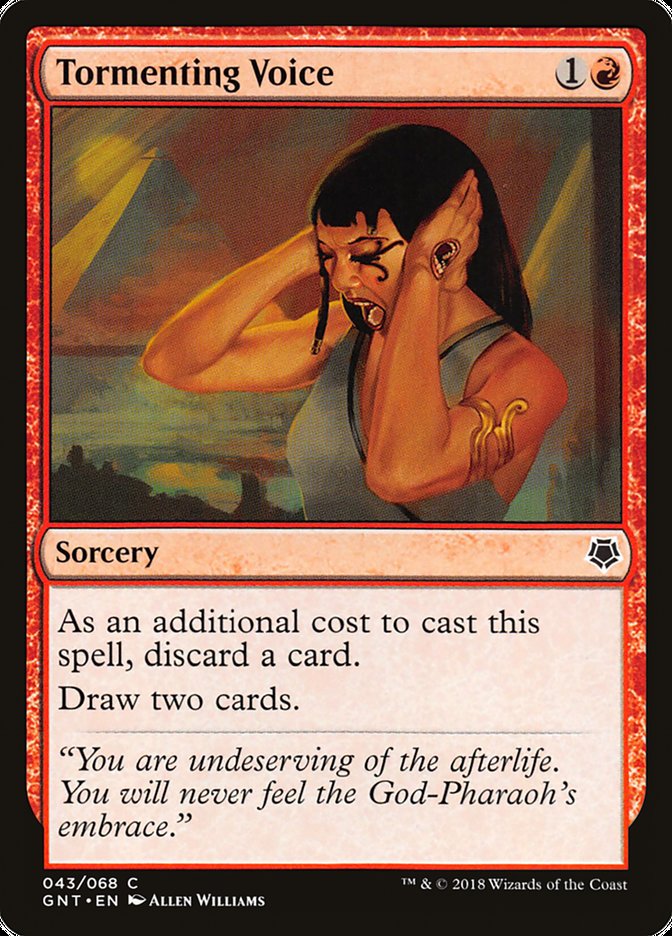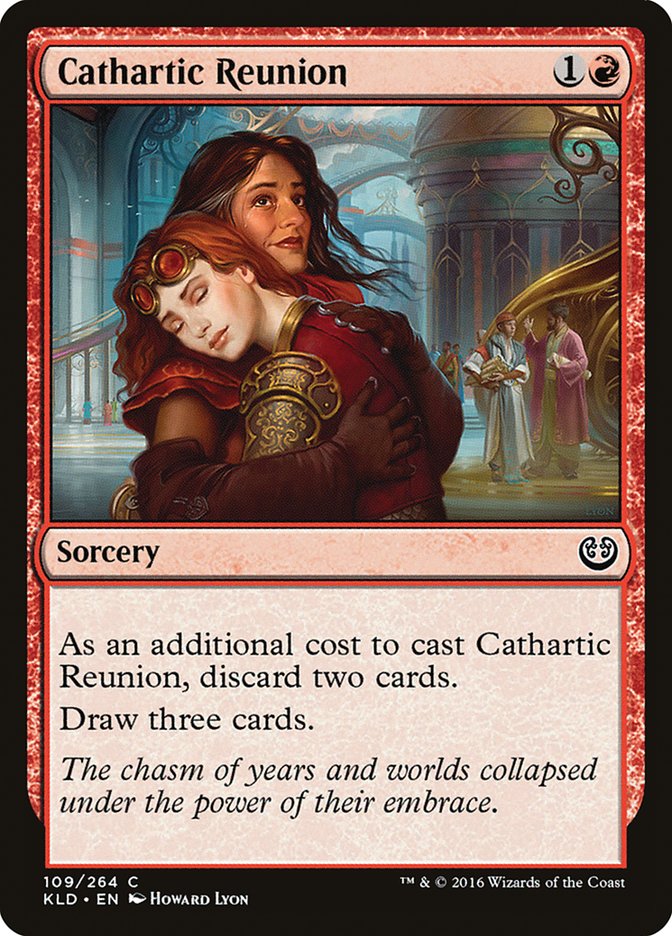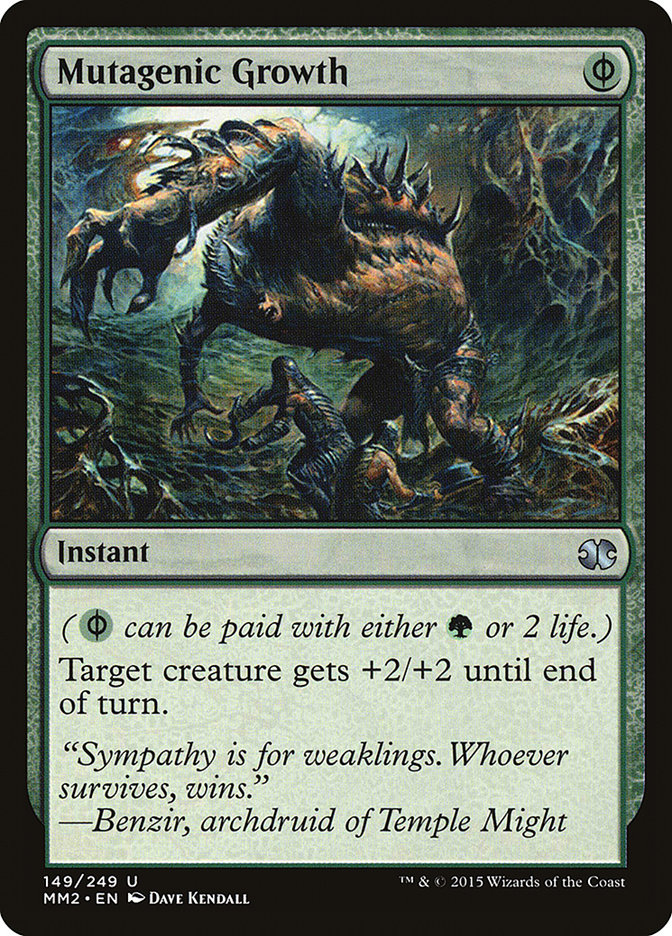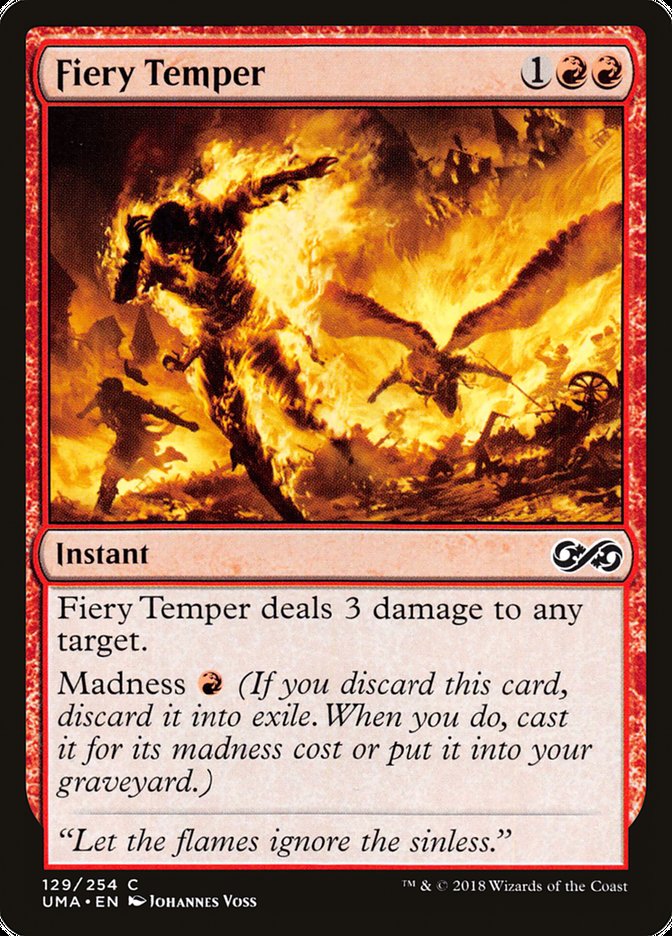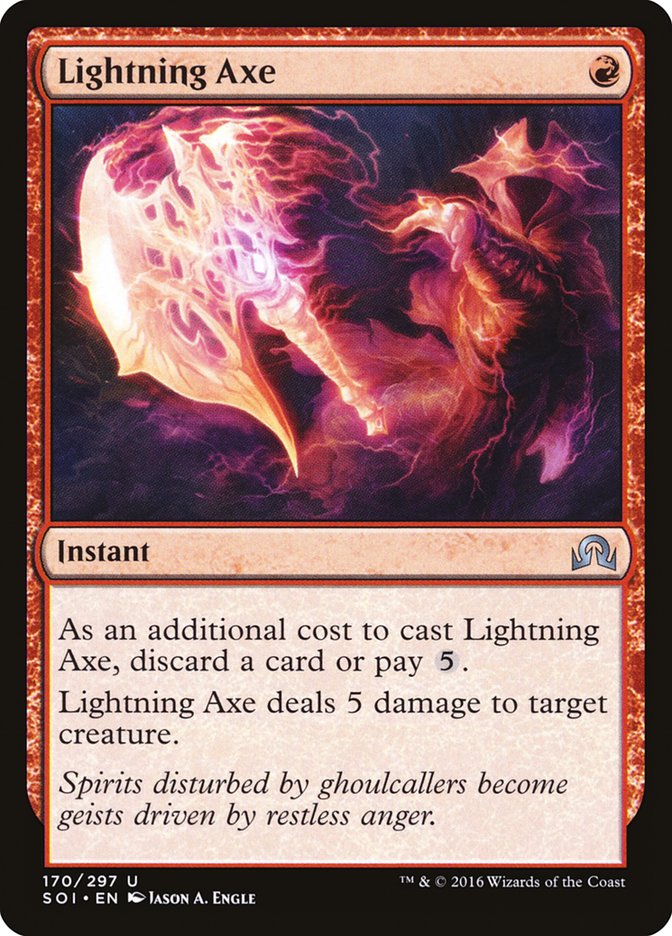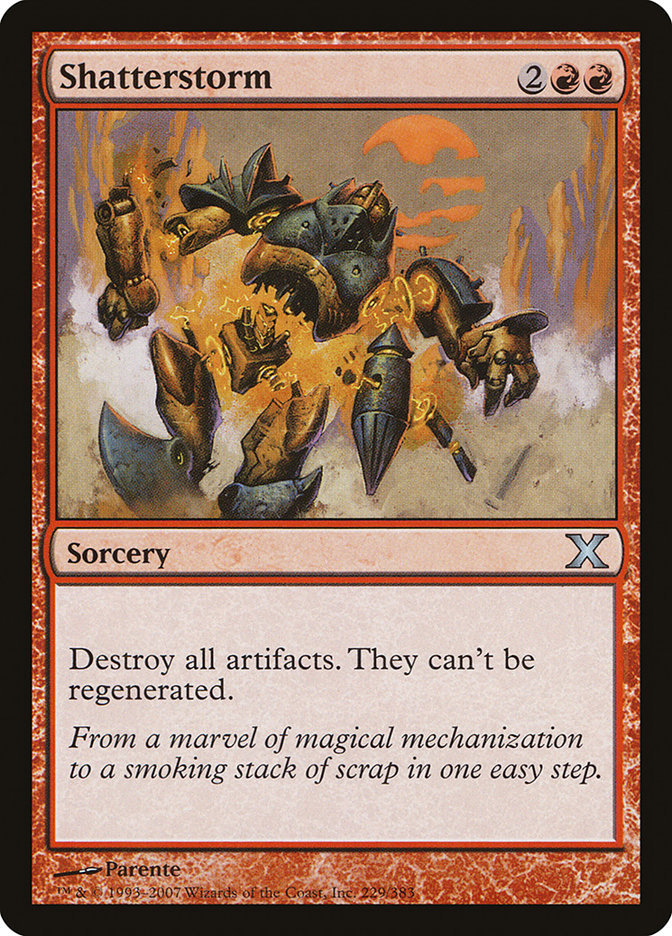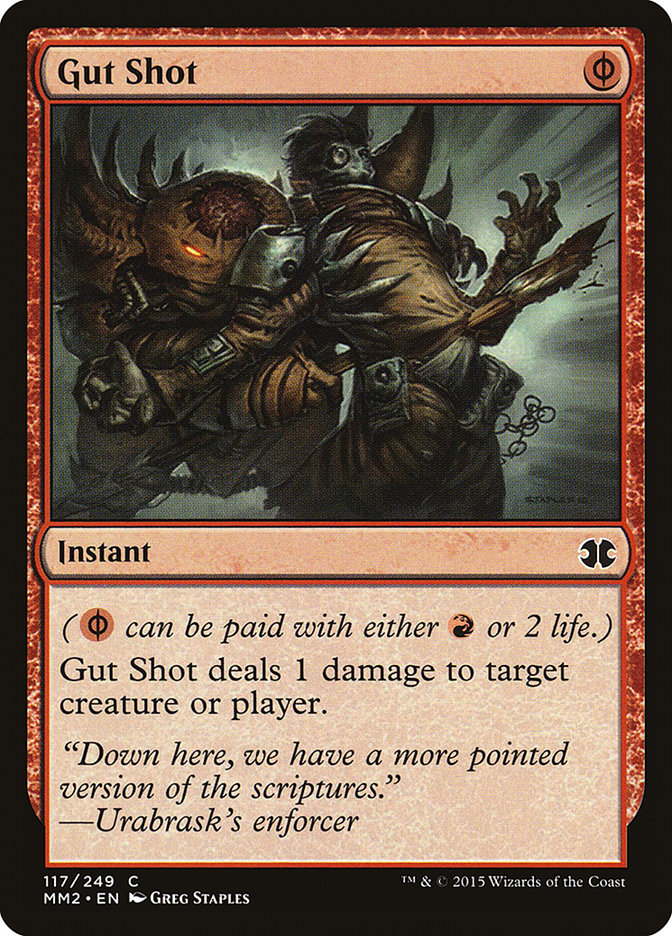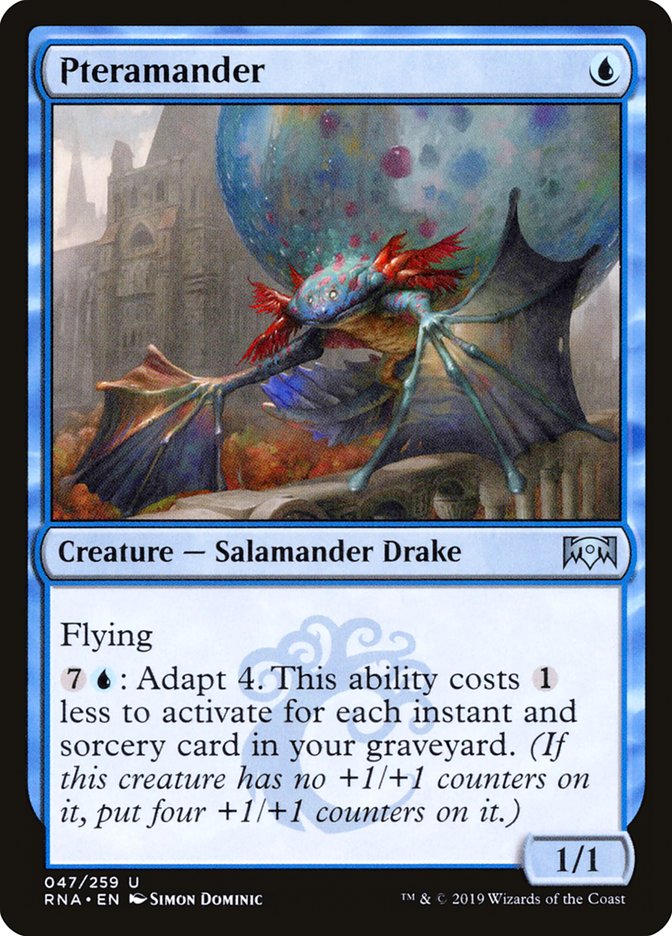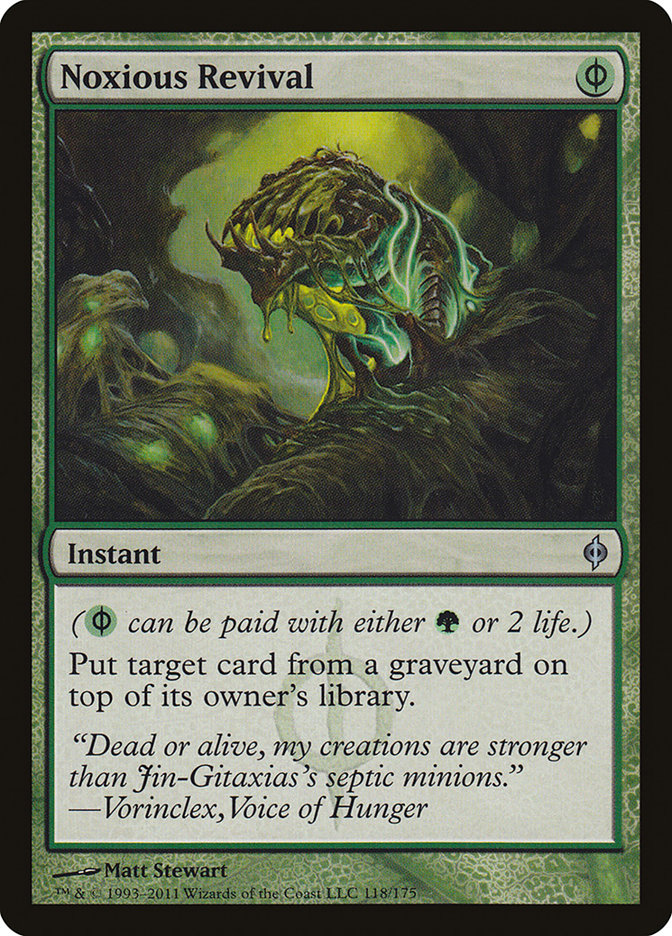Unless you’ve been living under a rock, you should know that Arclight Phoenix has been tearing up the Modern scene. The two primary shades of the archetype are Izzet and Mono-Red. The former relies on Thing in the Ice to do a lot of heavy lifting in some of the tougher matchups, where the latter utilizes Bedlam Reveler and other prowess creatures to function like a burn deck. And thanks to Skewer the Critics and Light Up the Stage, the burn-esque portion of the deck is often more consistent, and more powerful, than the Faithless Looting and Arclight Phoenix half.
Last week, Ross Merriam and I ran Mono-Red Phoenix through the gauntlet. To say the least, I was not impressed. After failing to win a match in the three we played (granted, those were some of the tougher decks for Arclight Phoenix in Modern), I just noticed myself wishing to decrease the overall power level a bit in order to upgrade the consistency.
Identifying the Achilles Heel
Before Ravnica Allegiance, Mono-Red Phoenix looked like this.
Spells (28)
- 4 Lightning Bolt
- 3 Desperate Ritual
- 4 Fiery Temper
- 4 Manamorphose
- 3 Gut Shot
- 4 Faithless Looting
- 3 Tormenting Voice
- 3 Maximize Velocity
Sideboard

Aside from Faithless Looting, this version of the deck had Desperate Ritual to cast faster Bedlam Revelers. Understanding that the raw number of cards you had at any given time wasn’t all that relevant was key in understanding the archetype. Both Marshall Arthurs and Ben Weinberg really put that ideology to the test by playing three copies of Maximize Velocity which really only “work” with Soul-Scar Mage and Bedlam Reveler. You just want ways to churn out Bedlam Reveler and make it as powerful as possible.
Here’s what the most current version of Mono-Red Phoenix looks like.
Spells (28)
- 4 Lightning Bolt
- 4 Lava Spike
- 4 Manamorphose
- 4 Gut Shot
- 4 Faithless Looting
- 4 Light Up the Stage
- 4 Skewer the Critics
Sideboard

Current iterations of Mono-Red Phoenix aren’t playing Tormenting Voice or Maximize Velocity, which puts far more pressure on Faithless Looting. Without a way to discard Arclight Phoenix, it becomes one of the worst draws in your deck. And when the only real way to discard Arclight Phoenix is Faithless Looting, you end up with draws where you have Faithless Looting with no payoff, or an Arclight Phoenix you can’t cast. And while Faithless Looting is certainly fine alongside a bunch of Prowess creatures, I think it’s best to lean one way or another. In the words of the immortal Ron Swanson: “Never half-ass two things. Whole-ass one thing.”
Where things start to break down is Skewer the Critics and Light Up the Stage. These new cards encourage you to become a more burn-based strategy, as Spectacle is better utilized alongside damage-based spells like Lava Spike and Rift Bolt. I think we could potentially have more success by reverting to a more traditional version.
Spells (26)
- 4 Lightning Bolt
- 3 Desperate Ritual
- 2 Lightning Axe
- 4 Manamorphose
- 3 Mutagenic Growth
- 4 Faithless Looting
- 4 Cathartic Reunion
- 2 Maximize Velocity
Sideboard

These creatures as your opener are why I like this version of Arclight Phoenix quite a bit. They aren’t susceptible to graveyard hate, and they’re insanely efficient. You can pump them up to four power pretty easily in a single turn, all while digging further and further for Arclight Phoenix or Bedlam Reveler. They give you the speed to race fast combo decks and the consistency to fend off traditional (and specific) removal from the control and midrange opponents.
While Soul-Scar Mage is slightly worse than Monastery Swiftspear in the deck, shrinking an opposing threat like Tarmogoyf has actual value. Plus, if you’re unable to off one of those creatures with a single spell, shrinking it mid-combat can also help you win crucial combat steps.
I don’t think there’s any question that Marshal Arthurs chose Tormenting Voice for a reason. Cathartic Reunion is more inherently powerful, but often ends in a potential blowout from the opponent. Additionally, if you’re low on resources after getting Arclight Phoenix back onto the battlefield, it’s occasionally awkward to draw Cathartic Reunion when you don’t have enough cards in hand to cast it.
But that was before.
The current Modern format is about being more explosive. You need your early creatures to survive. And since we’re going pretty hard on situational spells like Mutagenic Growth, it’s important that we’re able to transform those into real spells given the right matchup. We’re going for speed via Maximize Velocity and Desperate Ritual, but some matchups require longevity. Cathartic Reunion can turn these mostly useless spells into something with a bit more punch. By discarding two cards, you can also find more explosive draws featuring double Arclight Phoenix.
Speaking of Mutagenic Growth, this deck has a great reason to play it as the “free spell.” Alongside Manamorphose, all these decks need some Phyrexian mana spell to help churn out Arclight Phoenix faster. Izzet versions are a bit more controlling thanks to Thing in the Ice, but we need our one-drop creatures to survive a Lightning Bolt. In any Phoenix mirror, Mutagenic Growth protecting your one-drop is insane, whereas Gut Shot would be mostly useless. And against a different deck where racing is an issue, Mutagenic Growth can often act as a free Lava Spike. With all the prowess creatures, it’s possible we want more of these free spells, but I’m not the biggest fan of Gut Shot at the moment, and we’re a bit faster than Izzet Phoenix, so I’m not really in the mood for maindeck Surgical Extraction.
Original iterations of Izzet Phoenix also played Fiery Temper, but the burn path just isn’t ideal. It’s too one-dimensional, and you’re often just becoming a flashier but less consistent burn deck. For this reason alone, I think cutting Fiery Temper altogether is reasonable. Obviously the three damage is solid in a lot of spots, but the hoops you have to jump through to make it good just aren’t ideal.
With the rise in popularity of Izzet Phoenix (and Thing in the Ice), cards like Lightning Axe start to go up in stock. I think having some number of ways to kill Thing in the Ice will steal games you have no business winning. It’s also a great answer to the big delve threats like Tasigur, the Golden Fang or Gurmag Angler, while also providing a way out against a large and in charge Pteramander.
With the rise in popularity of Grixis Whir, I think it’s important to add an extra piece of artifact hate to your deck. Shatterstorm is pretty sick against Welding Jar too, as it prevents them from regenerating. Never thought that ability would end up being relevant, but here we are!
A sick sideboard card with a lot of versatility, Chandra, Torch of Defiance is a hard-hitting threat that doubles as a way to remove mid-sized creatures. And when all your opponents will be hitting your graveyard in one way or another, you desperately need one or two more ways to kill your opponent without using the graveyard. Since Bedlam Reveler is useless against Leyline of the Void, and Arclight Phoenix is stifled by Surgical Extraction, something like Chandra, Torch of Defiance is a perfect curveball. For the record, I’ve also considered Goblin Rabblemaster, but this version of the deck just doesn’t have enough removal to clear all potential blockers.
Izzet Phoenix and Banking on Consistency
There’s much to be said about Izzet Phoenix and its place in Modern. For months now, it has been the dominant “fair” archetype, in that it doesn’t do anything we would normally call “broken.” Like Affinity before it, it has explosive draws that can function like a combo deck. Arclight Phoenix plus Faithless Looting is pretty disgusting, after all. However, that’s not where the deck thrives and those draws are certainly not something you can always rely on.
Izzet Phoenix thrives in formats where your opponents want to interact with you. When Lightning Bolt acts as a removal spell or Gut Shot can take out key creatures, that’s when Izzet Phoenix is at its best. When Lightning Bolt and Fatal Push are the primary removal spells in the format, or even when removal is being heavily played, that’s the format where you’re going to see something like Arclight Phoenix thrive.
With that said, the formats where Arclight Phoenix will falter are ones where your opponent is trying to ignore you and is playing very few creatures. I found myself struggling to beat Ironworks and Primeval Titan decks, and I can only assume that matchups like Ad Nauseam are particularly tough.
My experience in learning Izzet Phoenix archetype mostly comes from watching and listening to experts like Ross Merriam, whose results with the deck are staggering. And though we constantly disagree on a few key aspects of the build, I tend to default to his build whenever I can’t figure out things for myself. But I have some very strong feelings about the deck that I’d like to get on the record.
Twelve Threats
I know I’m in the minority here, but I honestly don’t think the deck needs to play twelve threats. Four each of Arclight Phoenix and Thing in the Ice is a must, but every other threat people have tried to play just isn’t nearly as good.
Top picks for nine through twelve:
1. Pteramander has been the best so far, but I don’t want to play more than two.
2. Crackling Drake is too expensive but is certainly fine in a format full of Jund or similar archetypes.
3. Pyromancer Ascension is a bit slow, though solid if the format slows down a bit.
4. Young Pyromancer suffers from being a creature that’s actively bad in conjunction with Thing in the Ice.
5. Bedlam Reveler got cut from initial iterations because your hand was rarely empty. However, it’s so good in the Mono-Red versions that I think it might be worth skewing your deck more toward the Mono-Red build in order to utilize this monster.
6. Though I haven’t tried them yet, I think a noncreature like Jace, the Mind Sculptor or Chandra, Torch of Defiance could be good in this spot. The fact that they dodge the trigger from Awoken Horror is key.
In testing for the MCQ this past weekend, I was hell-bent on finding the best version of Izzet Phoenix. The first iteration I tested out last week featured four copies of Pteramander and two Chart a Course. However, I found myself never wanting to cast Pteramander on the first turn, even with Chart a Course in hand. Instead, I put an emphasis on casting cantrip spells in order to find Thing in the Ice or Arclight Phoenix more quickly.
Pteramander also suffers from being another threat that relies on the graveyard, making you more susceptible to big anti-graveyard hosers like Rest in Peace or Leyline of the Void. In the original iterations, Ross found that Crackling Drake was particularly solid after sideboard because it didn’t care if the cards were exiled or not. As a result, Ross recommended two copies of each, and I was ready to give up and just believe him.
And so, for the MCQ this past weekend, since I couldn’t figure it out myself, I decided to trust Ross. He told me to play the following list.
Creatures (12)
Lands (18)
Spells (30)
- 4 Lightning Bolt
- 4 Serum Visions
- 4 Opt
- 1 Lightning Axe
- 4 Manamorphose
- 1 Flame Slash
- 2 Surgical Extraction
- 1 Gut Shot
- 4 Faithless Looting
- 4 Thought Scour
- 1 Izzet Charm
Sideboard

I took a lot of what Ross said to heart. And ten minutes before the start of the MCQ, I had this exact list queued up and ready to go. But I panicked. Something felt off. And because of that feeling, like I’ve had so many times before, I decided to trust my gut and make some changes.
When I did play the four-Pteramander version, I regularly sideboarded all of them out. After sideboard, you can morph into a more controlling deck, and that deck doesn’t really need Pteramander. More removal means the game goes longer, which gives you more time to find Arclight Phoenix and Thing in the Ice. So the majority of the time I was playing the version with four Pteramander, I actually only had eight threats left in my deck. This made me realize that you don’t actually need all twelve threats, and that last slot can be whatever you want it to be.
There were a lot of considerations for this last slot, but my gut told me to fill it with one of the generic sideboard cards in order to find room for a Shatterstorm. With Grixis Whir gaining some traction, especially on Magic Online, having access to Shatterstorm as the knockout spell is big. The card I moved over?
Not only has Beacon Bolt been one of the most impressive sideboard cards for me, but it’s also absolutely fantastic to hit off a Thought Scour. Games tend to go longer after sideboard because you have more removal, so why not just play one of your best removal spells in the maindeck? I sideboard in Beacon Bolt all over the place, and having an extra answer to Thing in the Ice or Gurmag Angler or Tarmogoyf is nice.
After a bit of tinkering in the final minutes, here’s what I ended up playing in the Magic Online MCQ.
Creatures (11)
Lands (18)
Spells (31)

I credit Ross with the majority of this list. It’s his baby, after all, and I just put my own little spin on it. Unfortunately, I didn’t win the tournament, but I did take it to a 7-2 (Top 32) finish against a field of nearly 300 players.
My first loss came in the first round to a Jund opponent. Unfortunately for me, my draw featured a slow start, and a maindeck Kalitas, Traitor of Ghet was too much for me to beat. In the second game, I churned through 37 cards looking for Arclight Phoenix but just couldn’t find one.
My second loss came in the eighth round to one of the most disheartening draws I’ve ever faced in a match of Magic. Against Hollow One, with me on the draw, my opponent produced sixteen power on the second turn while hitting me for five points of damage. My draw featuring a Thing in the Ice transforming on the second turn wasn’t even close to good enough. And unfortunately for me, the third game had me falling to one of the hardest cards for my deck to beat: Leyline of the Void. Hollow One and Dredge are a few of the decks that can afford to play such haymaker hate cards in the sideboard, but that single Leyline of the Void just broke me. And truth be told, that was the first Leyline of the Void or Rest in Peace I’ve seen hit a battlefield in months.
Aside from those two losses, the deck was cruising, and I was moving right along with it. The games were tense, and I actually started to get nervous as the rounds passed. I found myself taking a lot of time on plays that would normally be no-brainers, if only to make sure I didn’t forget some key sideboard card or piece of hate my opponent could throw at me. Overall, I had a blast, and if you want to watch the games, you can check out the VOD from my stream here. The deck felt fine, though I’m still not sure where you want to be on that last threat. Maybe ten is the right number, playing two copies of Pteramander, but that might put a lot of stress on both Thing in the Ice and Arclight Phoenix in the post-sideboard games.
One card I think could be great is Noxious Revival. I’ve seen it in quite a few lists, and in some spots it acts similarly to Surgical Extraction, but has the upside of letting you double-spell in weird spots. On top of that, if you mill over Thing in the Ice with Thought Scour, you can buy it back for zero mana, all while giving yourself the necessary free spells to trigger both Arclight Phoenix and Thing in the Ice.
On top of that, in post-sideboard games, Noxious Revival can actually protect your Arclight Phoenix from an opposing Surgical Extraction by putting it on top of your library in response. While it isn’t as tempo-oriented as Gut Shot, or as big of a sucker punch in the mirror as Surgical Extraction, Noxious Revival is likely the best maindeck candidate for the slot because of how well it works with your spell-based package.
Well, that’s all I have on Arclight Phoenix for now. This past weekend really opened my eyes about the last threat slot, as well as potential options for the free-spell slot. I’m also still not sold on Opt over Sleight of Hand, but that’s one I’ll just concede to Ross on. After all, if you have Opt on the play in the first game, it’s better to know what your opponent is playing before keeping something like Lightning Bolt. Being an instant also helps more after sideboard with the counterspells or when you are playing against something like Infect where you need to transform Thing in the Ice on your opponent’s turn.
I’m also still not a fan of Crackling Drake, but Ross loves it, and I haven’t been able to beat him on VS Live! in a few weeks, so maybe I should just bite the bullet and start listening to him more often!


